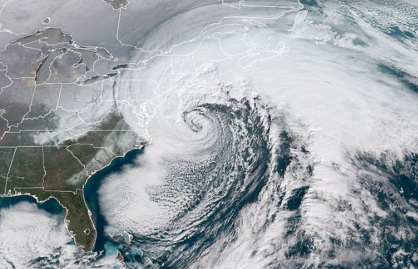What is Bomb Cyclone?
An important weather phenomenon is approaching the US West Coast, which is known as a “bomb cyclone,” and is expected to bring extreme conditions. A strong atmospheric river will intensify the storm, causing potential destruction across several states.
A bomb cyclone is a powerful winter storm, which occurs when atmospheric pressure drops rapidly. Specifically, the pressure must decrease by at least 24 millibars in 24 hours. This storm is predicted to drop nearly 70 millibars in one day. The pressure may reach 942 millibars, akin to a Category 4 hurricane.
Formation Process
Bomb cyclones form when warm, moist air collides with cold Arctic air. This interaction creates a rapidly intensifying storm. Meteorologists first coined the term in the 1980s. The term likens the storm’s intensification to an explosion.
Atmospheric River Impact
The storm will merge with an atmospheric river which consists of a narrow band of concentrated moisture in the atmosphere. The combination will lead to substantial rainfall and snowfall across various states.
Expected Rainfall Quantities
California is forecasted to receive approximately 8 trillion gallons of water within a week. Oregon and Washington are expected to receive 5 trillion and 3 trillion gallons, respectively. Idaho may see around 2.5 trillion gallons. Collectively, nearly 20 trillion gallons could fall across the western US.
Potential Effects
Coastal regions may experience erosion and flooding. Inland areas are at risk of flash floods and mudslides. Mountainous regions could face record snowfall. Residents are urged to stay updated on weather changes and heed evacuation orders from local authorities.
This storm exemplifies the growing frequency and intensity of extreme weather events. Many scientists attribute these changes to climate change. Increased storm activity may become a more common occurrence in the future.
Important Facts for Exams:
- Atmospheric River – An atmospheric river is a narrow band of concentrated moisture in the atmosphere. It can lead to substantial rainfall and snowfall across various regions.
- Millibar – A millibar is a unit of atmospheric pressure. It is commonly used in meteorology to measure pressure changes in weather systems.
- Climate-Fueled Storm – A climate-fueled storm refers to extreme weather events intensified by climate change. Scientists are increasingly linking these storms to rising global temperatures.
Month: Current Affairs - November, 2024
Category: Environment Current Affairs


